Back in 2016 the Daily Worker Placement published what quickly became our most popular article, 10 GREAT GAMES THAT PLAY IN UNDER AN HOUR. With thousands of games being published every year, a lot of excellent, quick playing games have come out, so it is my pleasure to present 10 MORE GREAT GAMES THAT ALSO PLAY IN UNDER AN HOUR. Sean’s original article had the entire history of the board game industry to draw on, but rather than making my own list of games that I think Sean missed for his list, I am going to focus games that didn’t exist four years ago. I have chosen five completely arbitrary genres of games, and will give you my two favourite titles from those categories.
I love dexterity games in general, with a specific fondness for stacking games, and the last four years has had no shortage of excellent stackers. My two favourite recent stacking games (which are probably my all time favourites) are Zoch Zum Spielen’s Menara, from designer Oliver Richtberg, and Tokyo Highway from Itten Games, and designers Naotaka Shimamoto & Yoshiaki Tomioka.
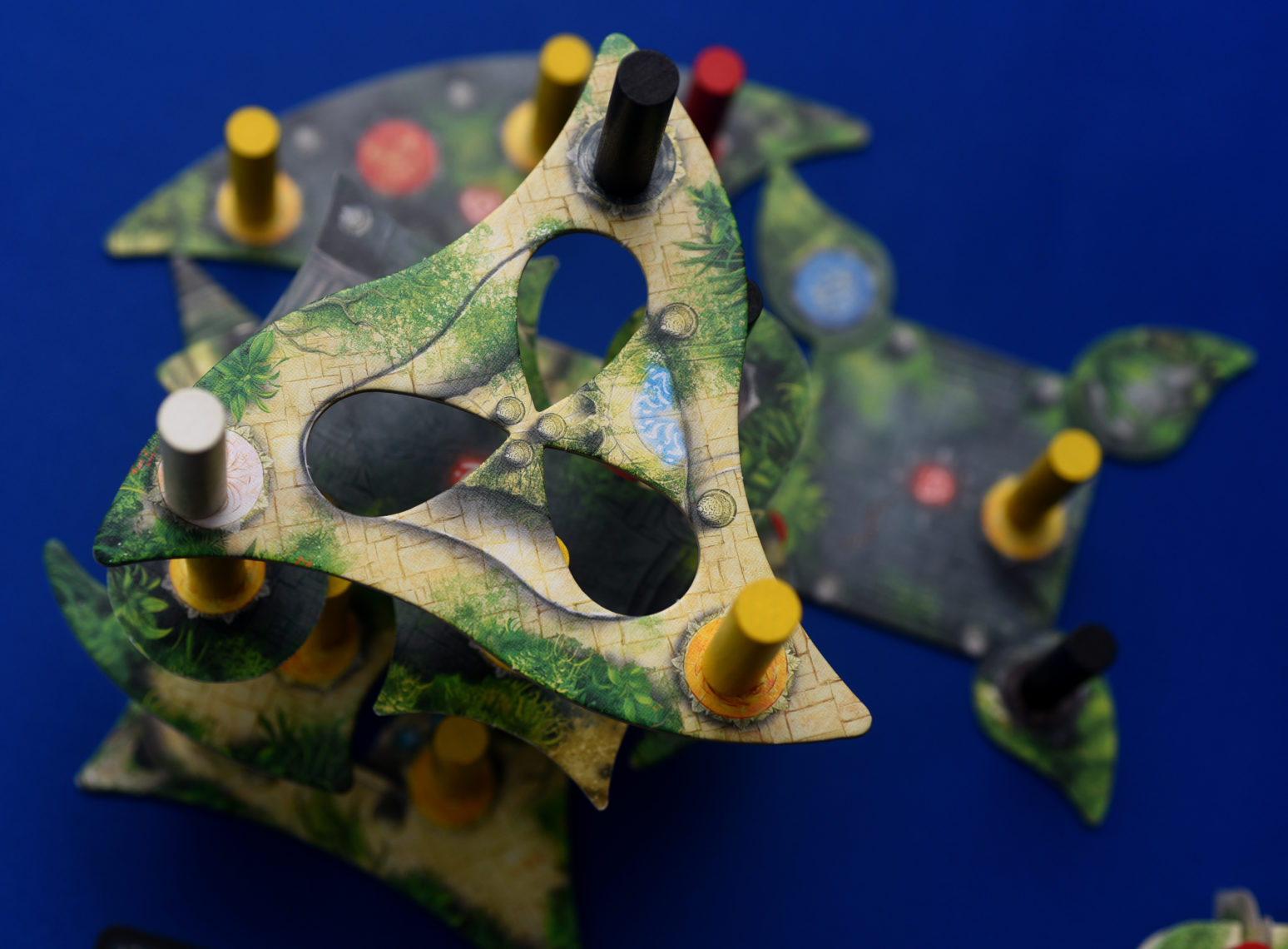
Menara is similar to the Spiel des Jahres winning Villa Paletti, but is co-operative. Up to four players are building an ancient temple, using coloured wooden pillars, and irregularly shaped floor tiles, with coloured circles on them. Like most co-op games, Menara has a scalable difficulty, so you set the challenge you want at the start of play. Setting an easy, medium, or hard challenge, will determine the minimum height of the tower in floors, and the number of pillars each player has in their hand. On your turn you draw a building challenge card and then have to place new pillars from your hand (or move existing ones) according to the pictogram on the card. The cards are stacked in three decks sorted by difficulty, so you can pick how hard a challenge you want on each turn. Running out of challenge cards is one of the end conditions of the game. If you succeed at your building challenge, your turn is done with no consequences. If you fail your challenge, however, the minimum height required to win the game is increased by one floor. Either way, you fill your hand of pillars from the bag back to your hand limit, and the next player goes. If there are not enough pillars to fill your hand, that is another end condition.
When completing challenge cards, you must match the coloured pillars from your hand to the coloured circles on the floor tiles. If you fill the last circle on a tile, you must take the top tile from the pile of tiles and add it to the temple. If you are unable (or unwilling) to place the new tile on top of one or more open pillars, you can place the new floor tile on the ground floor, but by taking that easy out, you increase the minimum height required to win. Placing the last floor tile is yet another end condition.
Once one of the end conditions has been met, the game is over. Count the number of floors the temple has (not including the ground floor). If the temple has at least as many floors as your minimum for victory, you have won. Otherwise, the group looses the game.

Tokyo Highway is a game of building a complex system of roads that weave over and under each other, and in between buildings. The original edition was for two players, with an expansion for two more, but the North American edition bundled the base and the expansion together. The goal is to be the first player to get all your cars on the road. On your turn you must place a new construction pylon on the board and then link it to your last one with a road. If your new road passes either over, OR under an opponent’s road that has not already been crossed, you get to place a car from your supply on your new road. A construction pylon is made up of one or more grey cylinders, and under normal circumstances, new construction pylons must be exactly one cylinder taller or shorter than the pylon they will be connected to. Each player has a certain number of yellow cylinders that can be used to cap a pylon. Yellow caps do two things for you: 1) yellow caps are a fork in your road way, allowing you to build off them in two different directions, instead of the normal one, and 2) when you build a new pylon with a yellow cap, you may ignore the normal height restriction rules, so your new pylon can be any height you like.
Each player begins with a certain number of cylinders, and if you knock other players’ roads, cars, or pylons down, you must A) fix them before your turn is finished, and B) pay the offended player one cylinder for each road, car, or cylinder of theirs you knocked over. If it is your turn to play, and you are out of cylinders to build with, you are out of the game. The past player still in the game, OR the first player to place all their cars on the board, is the winner.
Honorable mentions go to Pretzel Games’ Junk Art by Jay Cormier & Sen Foong-Lim, and Haba’s Rhino Hero Super Battle, by Scott Frisco & Steven Strumpf.
The roll & write genre has exploded in the last decade. If you’ve ever played Yahtzee, you’ve played a roll & write game, but the genre has had many, more sophisticated entries in the past few years. In roll & writes (and their card game cousins sometimes called “flip & fills”), you roll dice (or reveal cards), and use the resulting numbers (or shapes/powers) to fill in areas of your player board. In some games you are trying to score more points than your opponents, while in others you are trying to fill your board first.

My favourite entry in the genre is the flip & fill Welcome to… from Blue Cocker Games, and designer Benoit Turpin. In it, any number of players are architects designing a neighbourhood in a ‘50s era housing development. Each player has a board representing the three streets they are trying to build, and the goal is to make your neighbourhood the most desirable in the subdivision, by making sure there are lots of houses with pools, nice parks, and not too many industrial sites.
The deck of cards is split into three piles and each turn one card from each pile is revealed. The top card of each pile and its associated discard pile now shows a pairing of a number (these are the house addresses you fill in on your streets) and a special building power (such as building a pool, or a fence, improving the parks, raising the property values of your neighbourhood, etc). House numbers must be filled in in ascending values from left to right, and the building power paired with the number you fill in must be used on the same house (or sometimes just the same street), so clever placement of your numbers and use of powers is essential to building a good neighbourhood. If you can’t use any of the three pairings revealed for the turn, you take a strike, and as soon as a player has three strikes, the game is over for everyone. The game also ends if someone has filled in all the house numbers on their three streets.
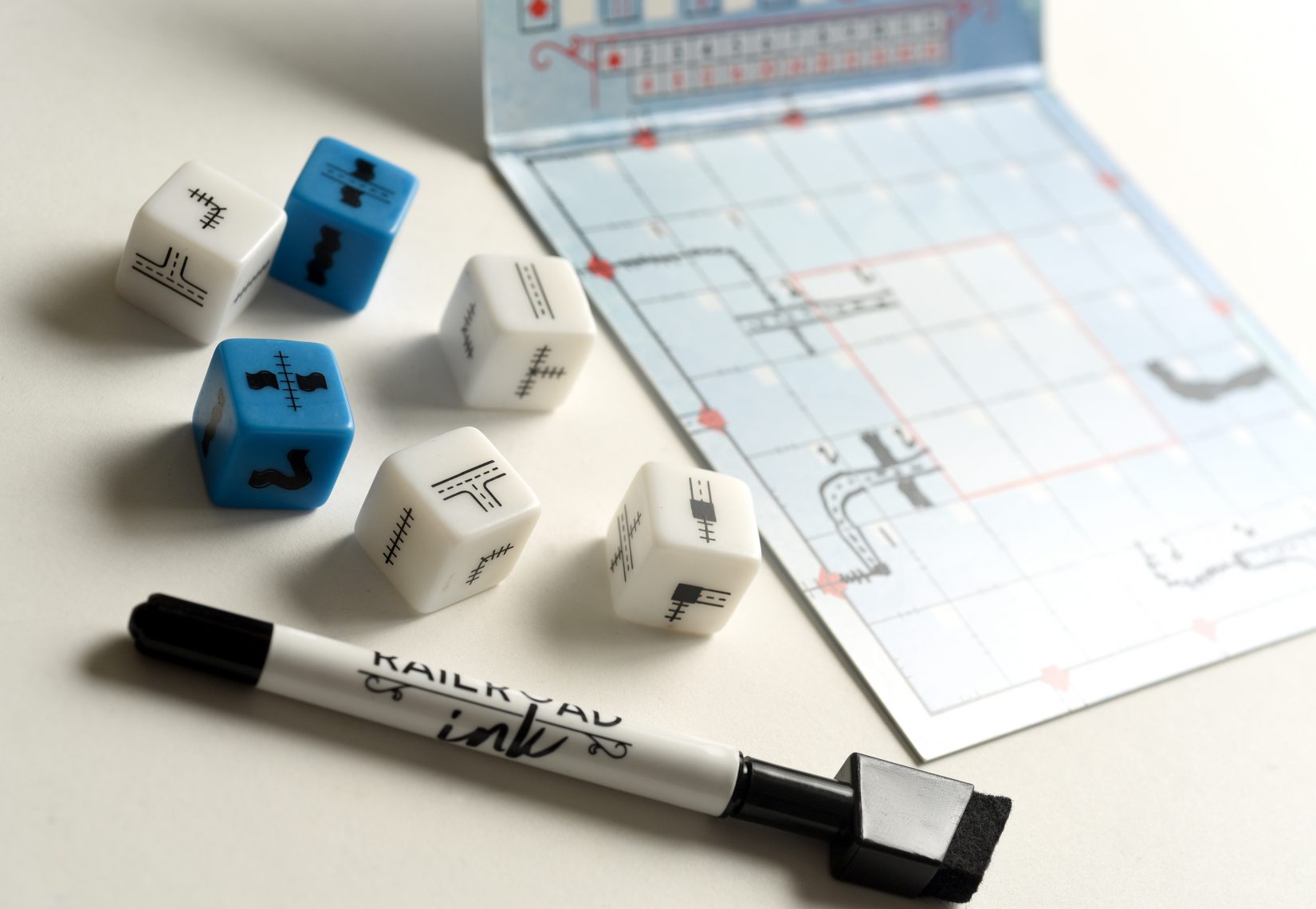
My second favourite roll & write is Railroad Ink by CMON and designers Hjalmar Hach & Lorenzo Silva. In Railroad Ink, two to six players compete to build the best transit network of railroads and highways. One player rolls all the dice for a round and each player decides how best to use the results to fill in the squares on their board, in an effort to connect as many of the network arrows, fill as many of the central city spaces, and have as few dead ends as possible. The game comes in two editions, Blazing Red, and Deep Blue, and each edition includes two mini expansions (Blazing Red uses volcanoes and meteors, while Deep Blue uses rivers and lakes) that change up the game play. In addition to the dice rolls every round, each player has access to six different special results that they can use to improve their network. You can only use three of the specials over the course of a game, and no more than one on any given round.
Honourable mentions to Second Chance by Uwe Rosenberg and Stronghold Games, and probably the most popular game in the genre: Wolfgang Warsch’s Kennerspiel des Jahres nominated Ganz Schön Clever (That’s So Clever) from German publisher Schmidt Spiele.
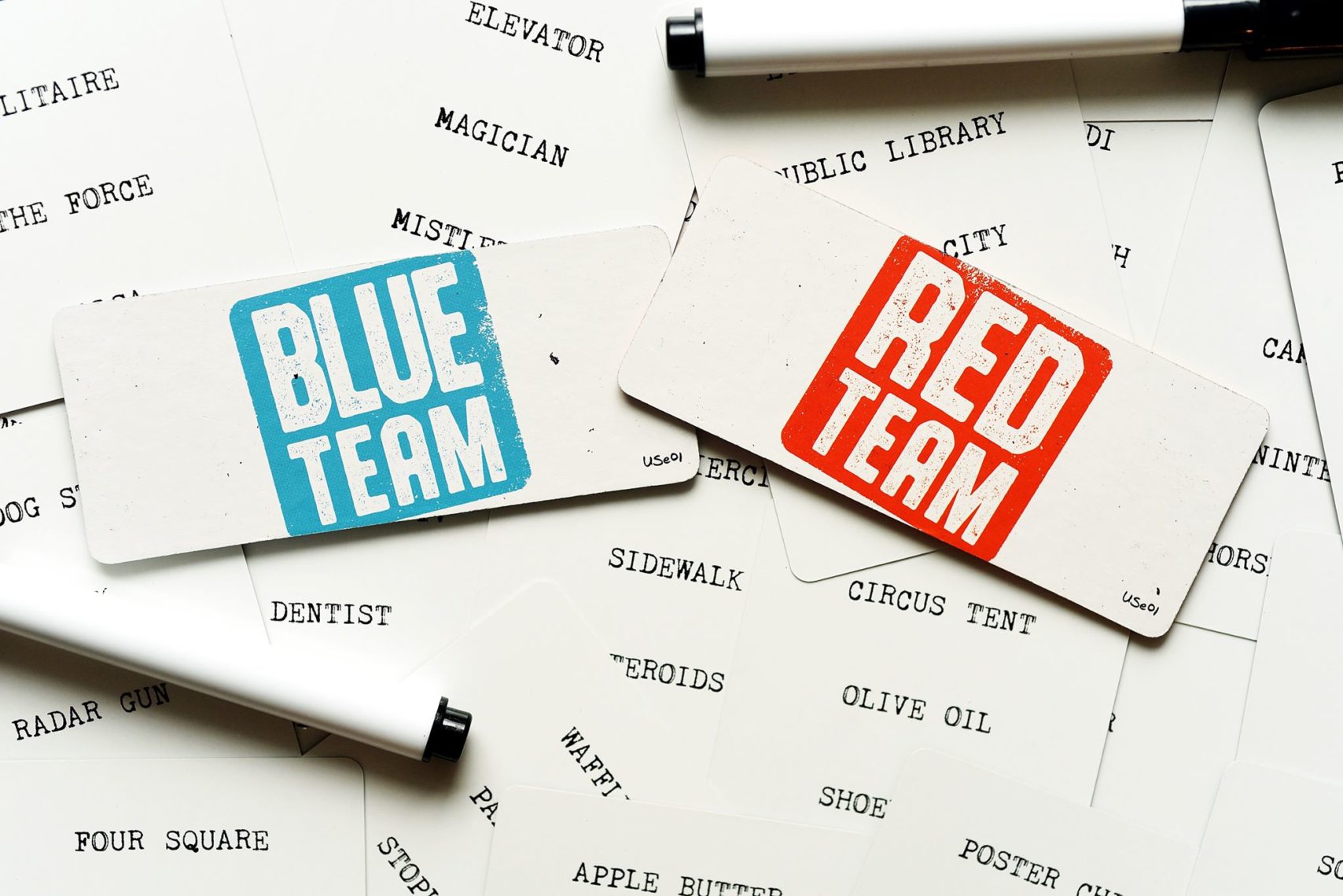
While many people will end up playing party games for hours and hours at a stretch, the genre is typified by games that can be played in about 20 minutes. The people who like them, will play them repeatedly over the course of an evening’s gaming. I’m a huge fan of Concept (which was on Sean’s original list), and Codenames, so it should come as no surprise that my first recommendation is the word guessing game Banned Words, from the design collective at Prospero Hall, and publisher Wonder Forge. Banned Words is similar to the game Trap Words, but has a simpler rules set and strips away the fantasy theme (something that puts off a lot of casual gamers). Imagine playing Taboo, but you create the list of forbidden words that your opponents aren’t allowed to use while giving clues and guessing. That’s Banned Words in a nutshell. Banned Words is for two teams of four or more people.
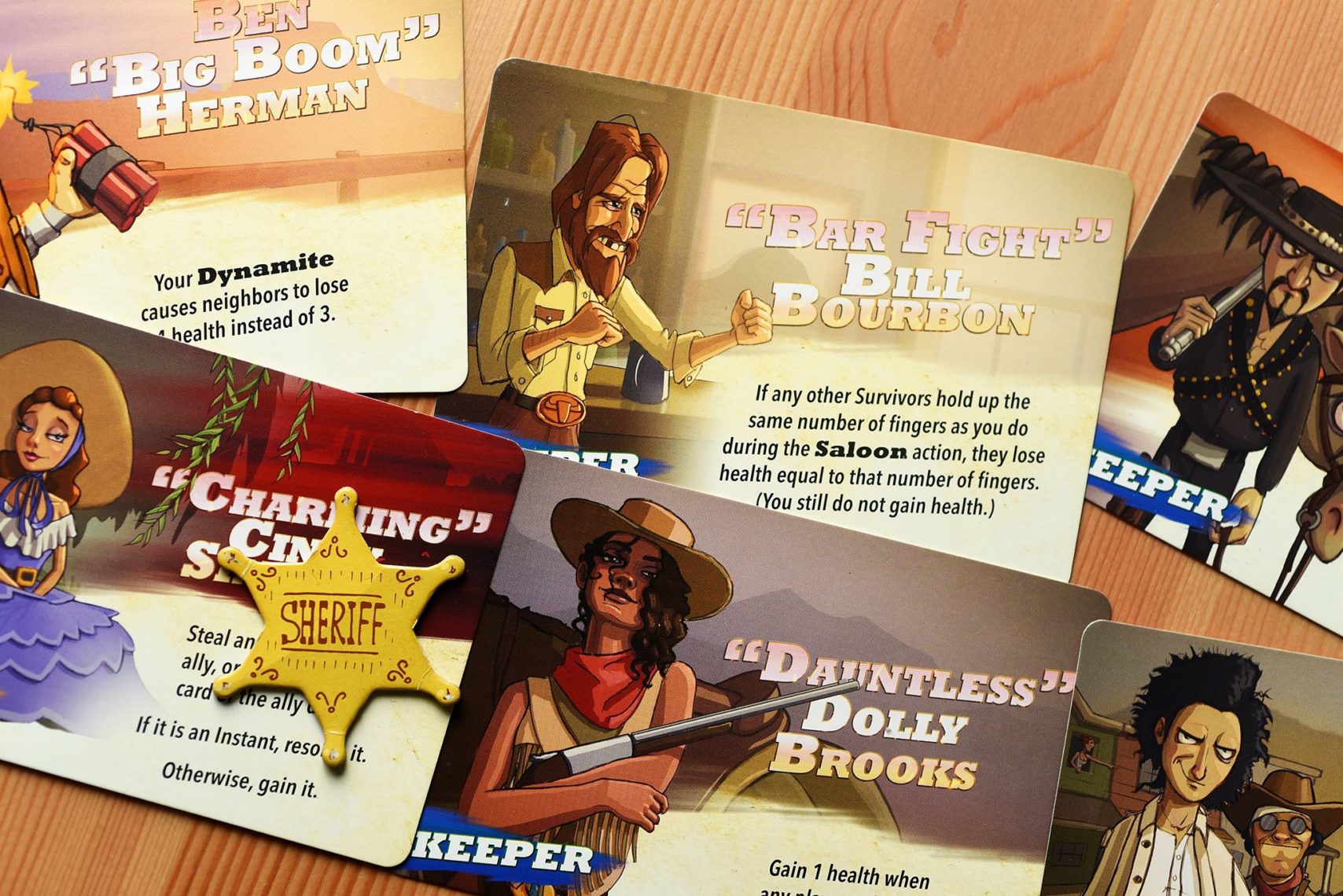
My second pick for fast playing party game is Indie Board & Cards’ Finger Guns at High Noon, by first time designer John Velgus. The game uses hand signs to simulate a wild west shootout between four to eight outlaws and gunslingers. I like to call it Rock, Paper, Cowboy! due to its similarities to the fantasy themed Rock, Paper, Wizard. If everyone dies, your goal is to NOT be the last one to die, but if at one person (or two, depending on player count) is still alive at the end of a round, you win if that person is you. Anyone at the table can call “One! Two! Three! Draw!” at any time, to initiate a shootout. Everyone must be throwing one of the allowable signs by the time “draw” is called. Anyone who throws in incorrect sign, or throws no sign, is a sitting duck. The different signs allow you to shoot someone, blow up your neighbours with dynamite, order whiskey at the bar (potentially healing yourself), lassoing a special ally cart, and so on. Each sign has a priority, so once draw has been called, the signs are resolved in priority order, and players heal, take damage, gain allies, etc., as you move down the list. If anyone loses their last health, they become a ghost. If everyone dies, the ghosts win (but anyone who gets killed in the final round of a total party kill does NOT win). The player who called draw is given the sheriff’s badge, which signifies that they are not allowed to call draw again.
Players are encouraged to negotiate and plan between shootouts, but you never know exactly when someone with an itchy trigger finger will call draw, so don’t get too involved in conversation or you’ll be caught with your pants down. The game’s concept was inspired by the card game Bang!, and it was originally (or so I am told) going to be called “Finger Bang” until Velgus discovered the other meaning of that phrase.
Honourable mentions to the Spiel des Jahres winning Just One from Repos Productiuons and designers Ludovic Roudy, and Bruno Sautter, and Wavelength from Palm Court, and the design team of Alex Hague, Justin Vickers & Wolfgang Warsch.
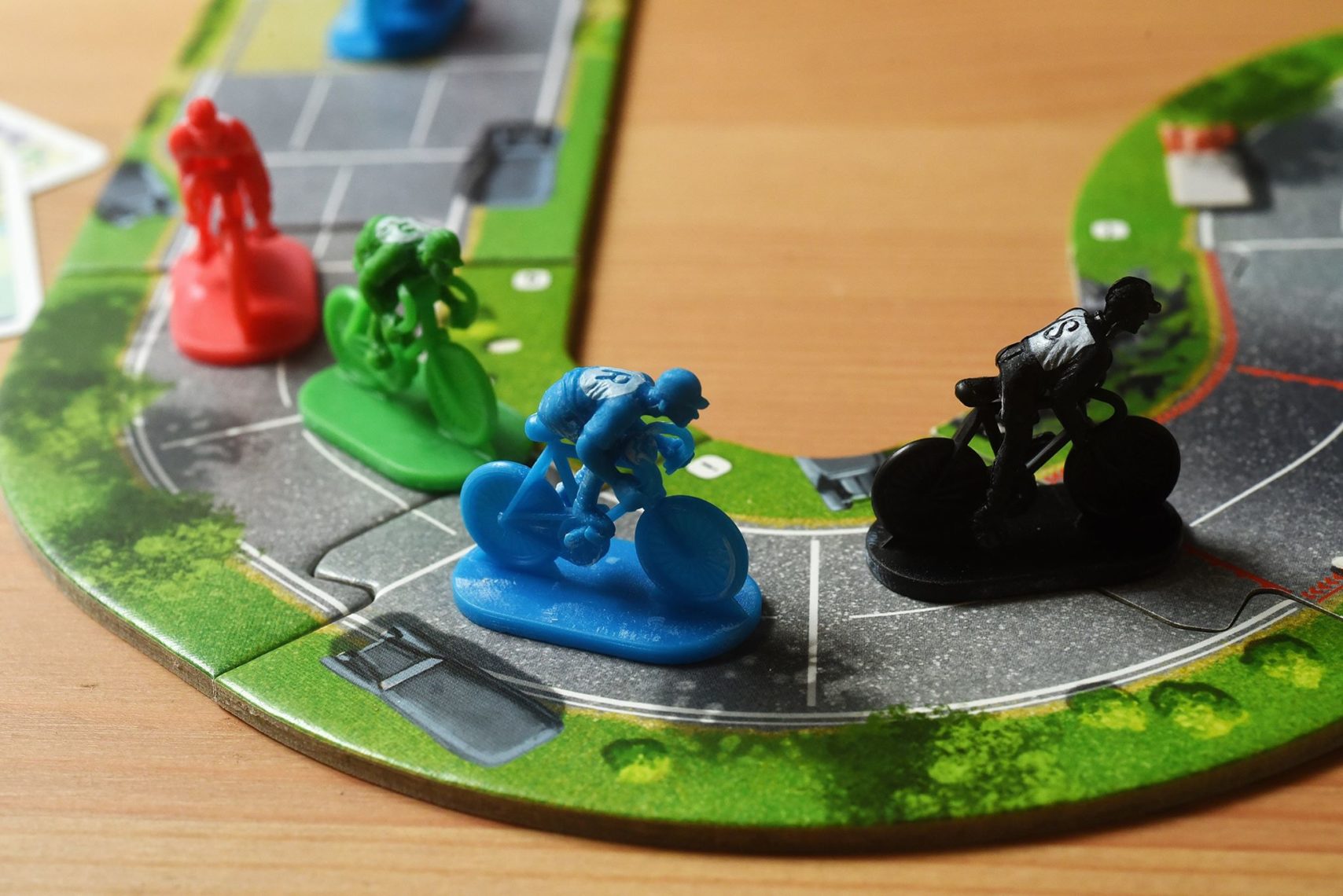
If you like racing games, Flamme Rouge from Stronghold Games, and Asger Harding Granerud is a great one for up to four players (six with the Peloton expansion – and up to 12 if you use the team variant). Each player controls a two person team of cyclists, competing to cross the finish line first. Your team consists of a roleur, who is always just grinding away, never super fast, but never super slow, either, and a sprinteur who is capable of great bursts of speed, but also falls victim to slow periods. Each of your riders has its own deck of cards to govern speed. You program one rider from their hand of cards, then the other, from theirs. It doesn’t matter which rider you program first, BUT you are not allowed to see your second rider’s cards before programming your first rider. One of the most interesting rules is that each card you select to play is removed from the game, and never used again, so timing your breakaways and your rest periods is crucial to winning. The game includes slipstreaming rules that allow your riders to take strategic advantage of placement behind other riders, and fatigue rules that make the riders at the front get fatigued faster than those in the pack. There are also advanced rules included in the base game for the effects of going up and down hills. The “board” is made of modular curves and straight aways that allow you to build several different predetermined courses, or get creative and make your own tracks.
Another great racing game just for two players is Osprey Games’ Odin’s Ravens by Thorsten Gimmler. Players are Odin’s pet ravens, each trying to fly around the world first, so they can report the news of the world to Odin before their opponent does. The race track is a series of terrain cards (mountains, rivers, forests, fields, etc), and players use matching cards from their “flight deck” to cross the different terrain types. Players also each have a deck of Loki cards that let them manipulate the race track, or their opponent’s pawn to their own advantage. Player’s flight decks recycle when they deplete, but Loki cards are gone once played.
Honourable mentions to Steffan Bogen’s Camel Up (2nd Edition), and Osprey Games’ co-operative race game The Lost Expedition (reskinned for the sci-fi fans as Judge Dredd: the Cursed Earth) by Peer Sylvester.
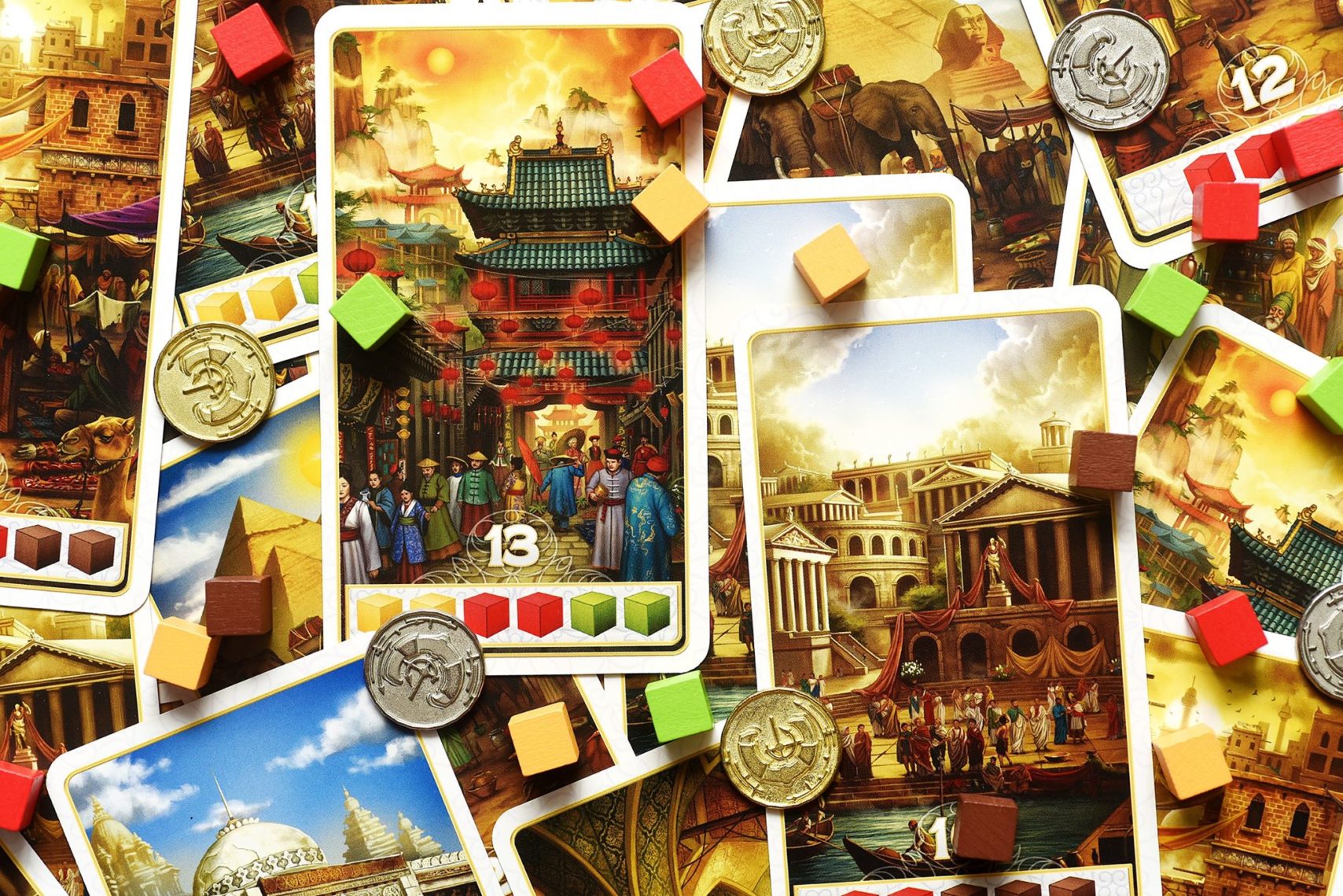
Lastly I present two of my favourite fast playing strategy games of the past four years. Splendor made Sean’s original list, and was nominated for the Spiel des Jahres, so I want to start with the game that fired Splendor into the sun (for me): Century: Spice Road, by Emmerson Matsuuchi and Plan B Games. Spice Road and Splendor have many points of similarity, and for my money, Spice Road does everything Splendor does, but better. Two to five players are spice merchants, collecting and trading spices until they collect the ones they need to fulfill orders that are worth victory points. One of the most interesting things about Century: Spice Road, is that it is the first game in a trilogy of games that can each be played on their own, or in various combinations with each other.
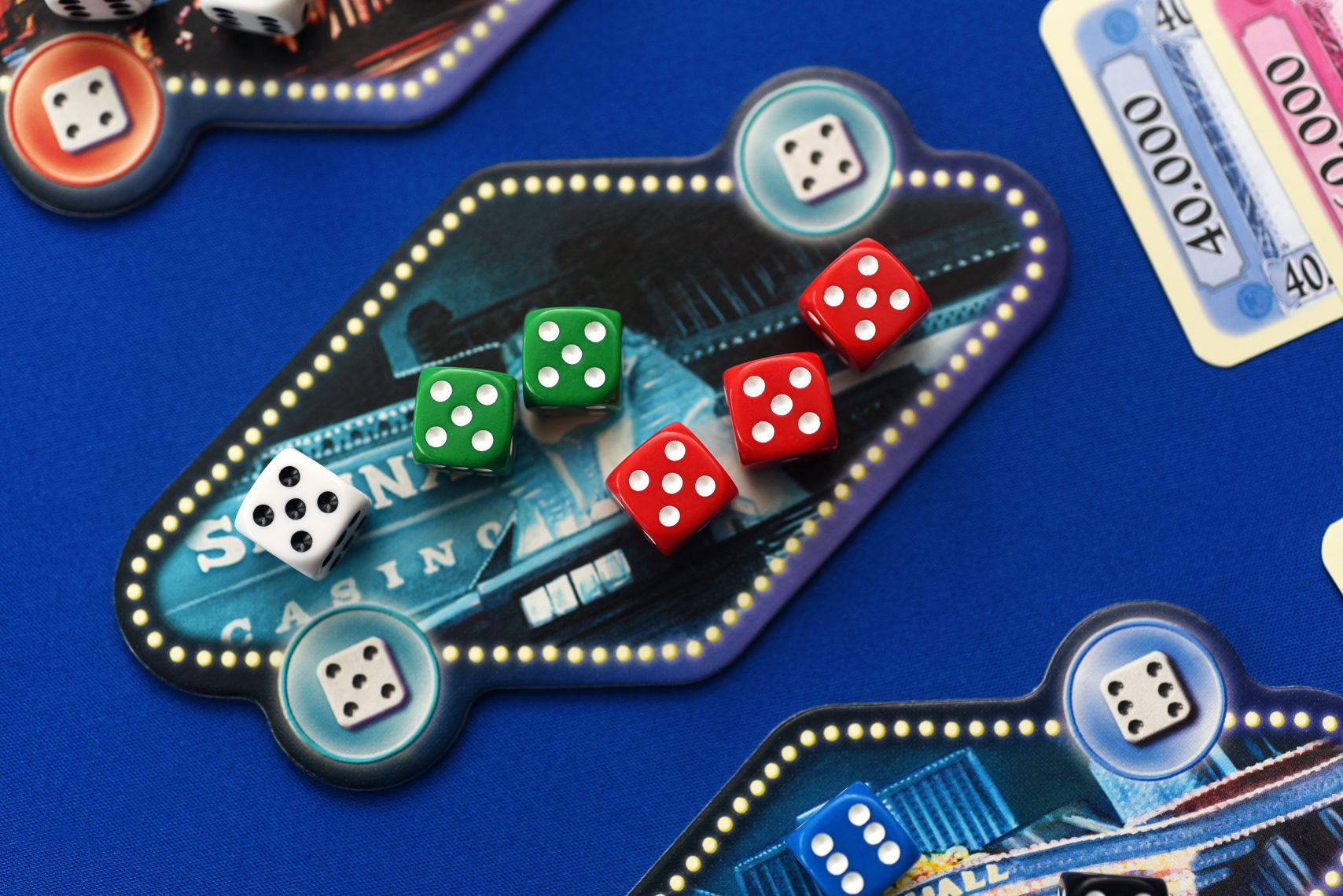
My other entry in the strategy category is the re-release of Rudiger Dorn’s 2012 classic dice game, Las Vegas. Given a new edition by Ravensberger, as Las Vegas Royale, this game remains as one of the best implementations of dice I’ve ever seen in a game. While I love the clean simplicity of the original, the Royale edition includes numerous new mini games that allow you to never play the exact same game of Las Vegas twice. Players roll and allocate their dice to the various casinos in the game. The player with the most dice at a given casino at the end of a round gets the biggest bill, and the player at the end of the game with the most money wins. The mini games in the new edition include ways to move dice around after the fact, make outside wagers, and more.
Honourable mentions to Ravensberger & Prospero Hall’s Jaws, and Sagrada from Floodgate Games and designers Daryl Andrews & Adrian Adamescu
Comments
No comments yet! Be the first!